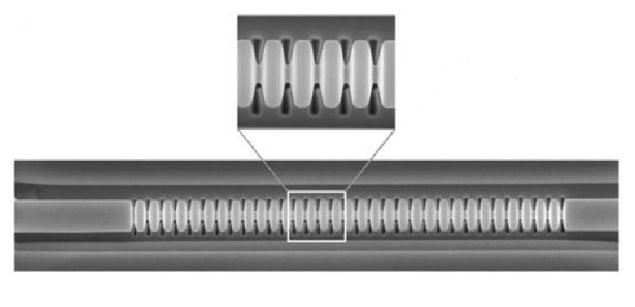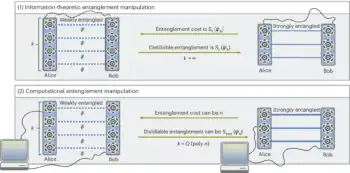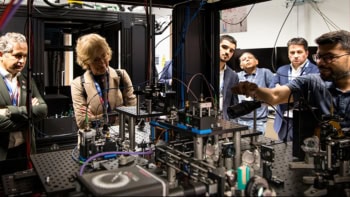
A new type of optical quantum memory that could be integrated with other components on a chip has been unveiled by physicists in the US. The device overcomes an important challenge facing researchers trying to make quantum computers based on light – how to efficiently capture a photon within a sub-micron-sized structure.
From sending messages that could never be bugged to linking together quantum computers in a “quantum Internet”, the ability to exchange quantum information may be vital to the future of technology. This will not be possible, however, without quantum memories to store quantum states and release them when needed.
In the Internet of today, information is sent between computers through a distributed series of nodes called routers. “Packets [of information] are maybe stored for some time and then they are sent,” says Andrei Faraon of the California Institute of Technology, “There is some control over the timing of the packet.” An optical network that uses photons to carry quantum information would require analogous nodes to store not strings of ones and zeroes (bits) but the full quantum states of individual photons (quantum bits or qubits).
There are currently several different quantum memories under development – some storing qubits as collective excitations in ensembles of atoms, others using solid-state crystals. Among the second group, crystals doped with ions of rare-earth metals have proved successful because rare-earth ions have sharp, stable electronic transitions that can couple to photons and preserve their quantum states. However, absorbing a photon generally requires millimetre- to centimetre-thicknesses of material, making quantum memories rather large.
Enhanced interaction
Now, Faraon and colleagues produced a resonant optical cavity just 0.056 μm3 in volume in neodymium-doped yttrium orthovanadate – which is a crystalline material used in solid-state lasers. The interaction between single photons and matter is strongly enhanced in the cavity, explains Faraon: “The photons are captured by the atoms in a much smaller volume. That is what allowed us to make a much smaller device.”
After cooling the cavity to 480 mK, the team couples it to an optical fibre fed by a laser. When a series of light-pulse pairs is injected into the cavity, the researchers return about 75 ns later. The fidelity of the memory (the proportion of retrieved photons that are in the correct quantum state) is 96.8%. This is on par with state-of-the-art quantum memories of this type. However, the efficiency of the memory (the proportion of photons retrieved at all) was only 2.5%. “We show a clear path towards how this efficiency can be improved,” says Faraon.
To control the time at which stored pulses are released, the researchers apply a second set of laser pulses that are slightly off resonance from the cavity frequency. These pulses compress the spacing of energy levels in the cavity through the Stark effect. The researchers found that this causes a slight delay in the timing of the photon’s release. As they increase the intensity of these “Stark pulses” the delay increases to a maximum of about 10 ns.
Faster preparation
Aside from the possible savings in materials and space, the nanophotonic memory has several advantages over its bulk counterparts. For example, before the cavity can accept a photon, the neodymium spins must be polarized using repeated laser pulses. “These preparation steps are significantly faster in the cavity [than in the bulk system],” says Faraon.
Margherita Mazzera of the Institute of Photonic Sciences in Barcelona describes the work as “significant”, adding: “There are several new aspects, but the most important is that it’s the first time that memory capacity has been demonstrated at the single photon level in a nanophotonic rare-earth system.”
She cautions, however, that drastic increases in both the efficiency (to around 90%) and the storage time, as well as the introduction of on-demand release of the photon are required before the system can be function as a practical quantum memory. The usual protocol to achieve on-demand read-out, she says, is “a very difficult step” that the researchers have yet to demonstrate. She describes the use of Stark pulses to delay the photon release as “an intermediate solution”.
Fundamental science
Nicolas Gisin of the University of Geneva says the work is “significant but also quite specialized”, and agrees that much work remains before the device can form a useful quantum memory. In his view, however, the emission delay due to the Stark effect is the most important feature of the work in terms of fundamental science. “I find it fascinating to stop a photon and decide when it comes back, and have it come back with all it’s quantum properties intact.”
The research is described in Science.



